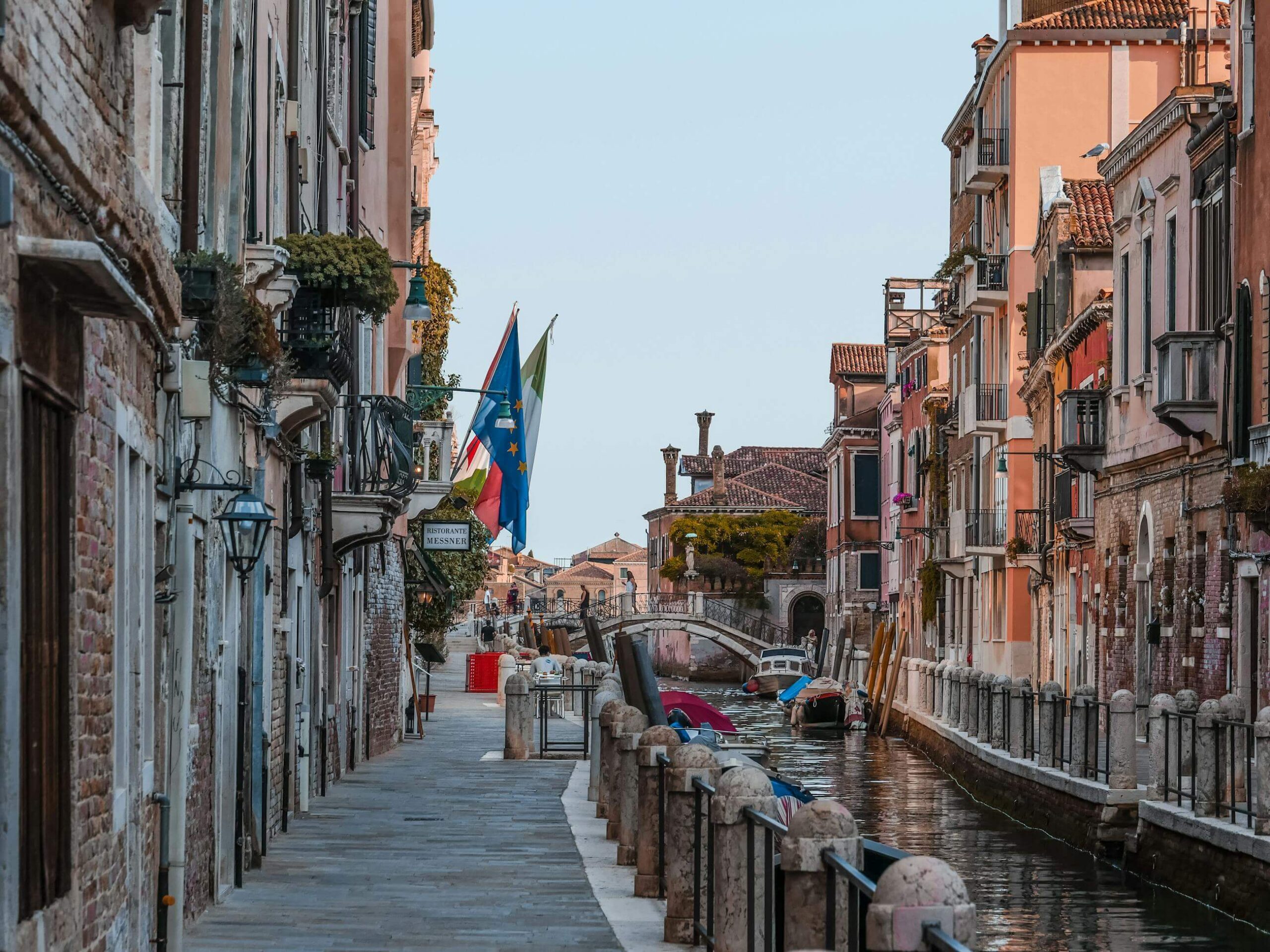The Calli of Venice – A City of 3,000 Alleys

Venice is often described as a labyrinth of water and stone, and if the canals form its liquid arteries, the calli are its capillaries — narrow alleys, silent passageways, crooked paths that connect campos to fondamentas, bridges to homes, and centuries to one another.
The city’s historic center includes around 3,000 calli — each one unique, each one with a name and a purpose. These are not ordinary streets. In fact, Venice doesn’t have streets in the conventional sense. Here, there are no cars, no curbs, no traffic. You walk through history, quite literally.
What Are Calli?
The word calle (plural: calli) simply means alley or narrow path in Venetian dialect. But in Venice, it has a special status: a calle can be a main thoroughfare or a barely-there shortcut between buildings; it can lead to a busy campo or end abruptly at a canal. Their variety is infinite — and so is their charm.
Some calli are bright and bustling, others are cool, shaded corridors that haven’t changed for centuries. Some are lined with artisan shops or cafés; others are so quiet you can hear the echo of your footsteps.
How Narrow Are Venice’s Calli?
The width of Venice’s calli varies dramatically — from just over 50 cm to 600 cm (5–6 meters). Some are so tight you’ll instinctively turn sideways to pass through.
Here are some of the narrowest:
- Calletta Varisco – the narrowest public alley in Venice, only 53 cm wide
- Calle Stretta – 65 cm
- Calle Ca’ Zusto – 68 cm
These dimensions aren’t unusual here — they’re part of the city’s DNA. While some calli allow for two people to walk comfortably side by side, others are no more than a whisper-wide passageway, barely illuminated even at midday.
And yet, Venetians still use them daily, often choosing the smaller calli to cut across districts or reach tucked-away homes.
The Names Behind the Alleys
In Venice, not all alleys are created equal—and neither are their names. Each name tells you something about its size, use, or history:
- Callesèlla / Callètte – Diminutive forms for very narrow, often pedestrian-only alleys
- Calli larghe – Wider alleys, functioning more like small streets
- Salizada – Historically important calli, among the first to be paved in stone
- Ruga – Commercial alleys lined with shops or market stalls, e.g. Ruga Rialto, Ruga Giuffa
- Ramo – Literally meaning “branch,” these are dead-end calli or short residential connectors that lead to private homes or courtyards
These distinctions may seem subtle, but they matter in a city where every curve has a past.
Every Calle Has a Story
Many calli are named after trades once practiced there: Calle dei Fabbri (blacksmiths), Calle del Forner (bakers), Calle del Pistor (millers). Others carry the names of families, forgotten convents, or nearby churches. Some reflect more curious origins — Calle della Morte (Alley of Death), for example, recalls a site once used for executions.
It’s not uncommon to find a calle named after a person who lived or worked there, like Callesella della Fruttarola, which was once home to a greengrocer (fruttarola) in San Polo.
The language of place names in Venice is as rich and storied as the architecture itself. And while the city changes with the tides, these names endure.
A Place to Get Lost — Deliberately
In Venice, getting lost is not an accident — it’s the goal. The city is built to be walked, wandered, and wondered at. The calli twist and turn, open unexpectedly onto bridges, wells, and campos, then vanish again into quiet shadows.
You don’t need to follow a map. You don’t even need a destination. Let the calli guide you—they’ll always lead you somewhere worth discovering.